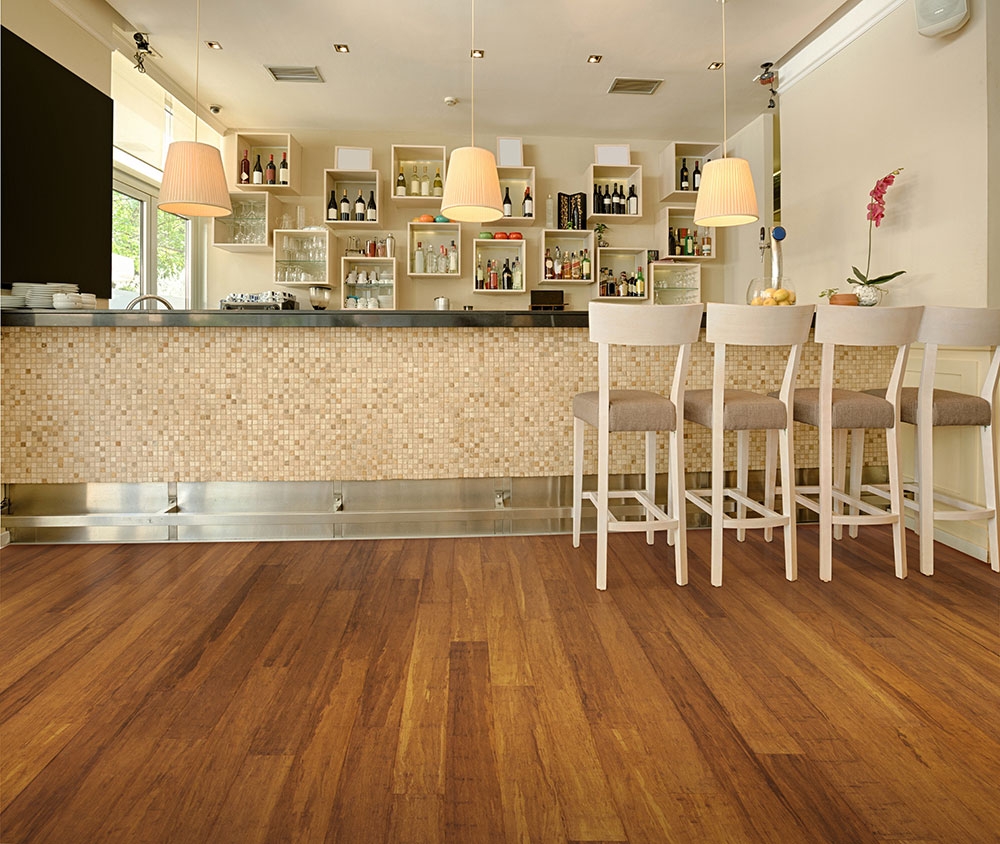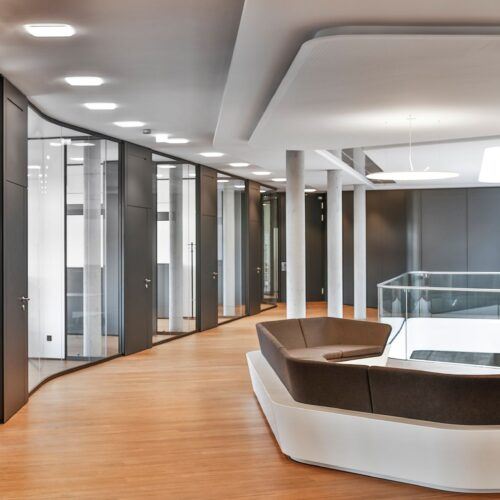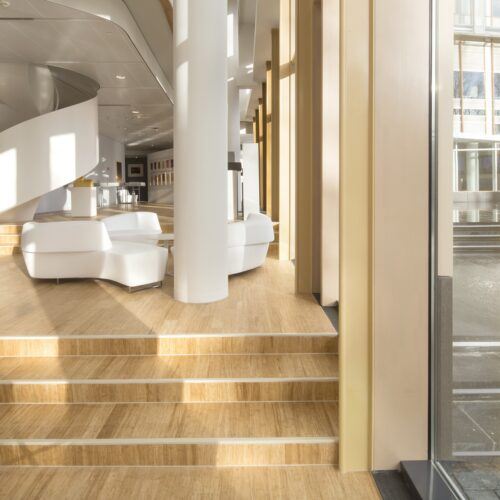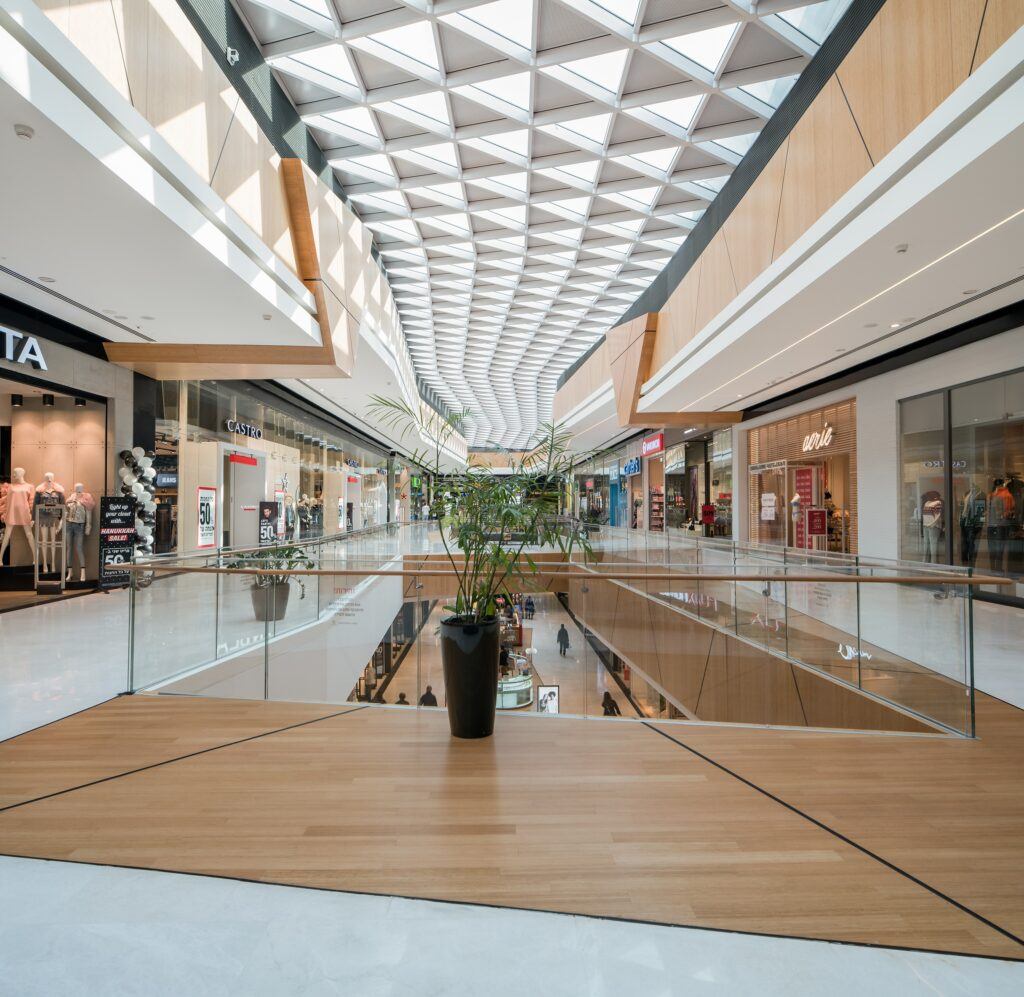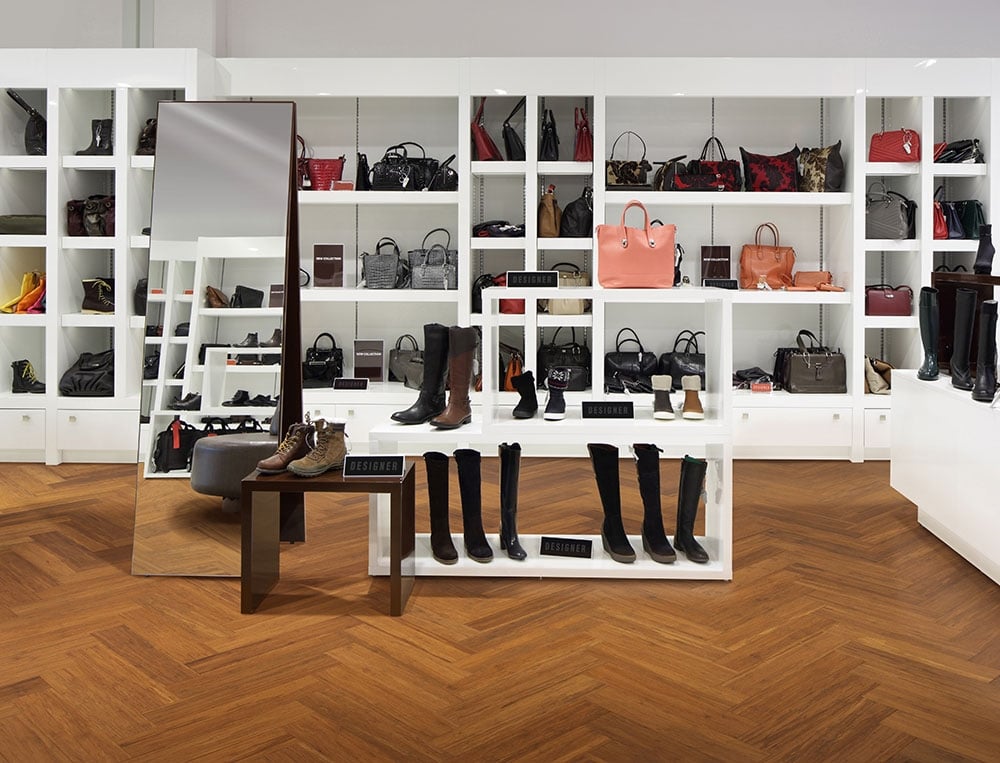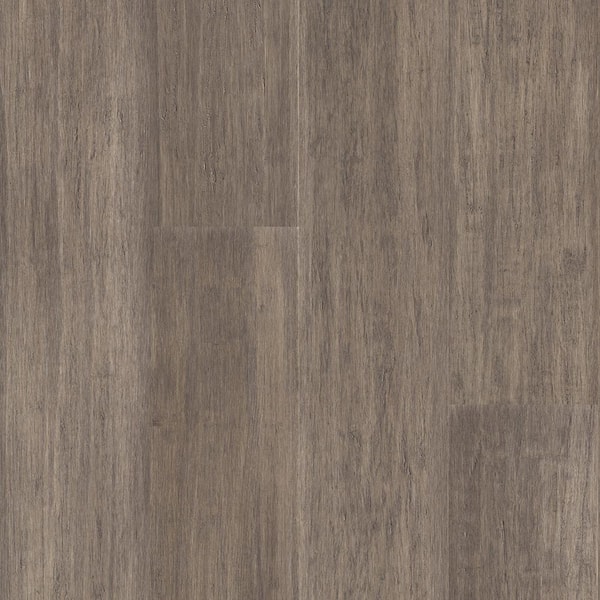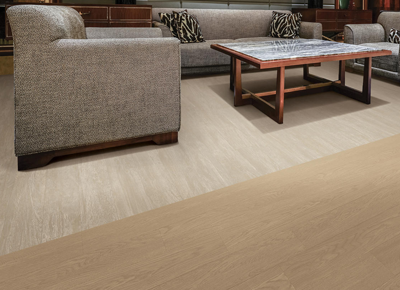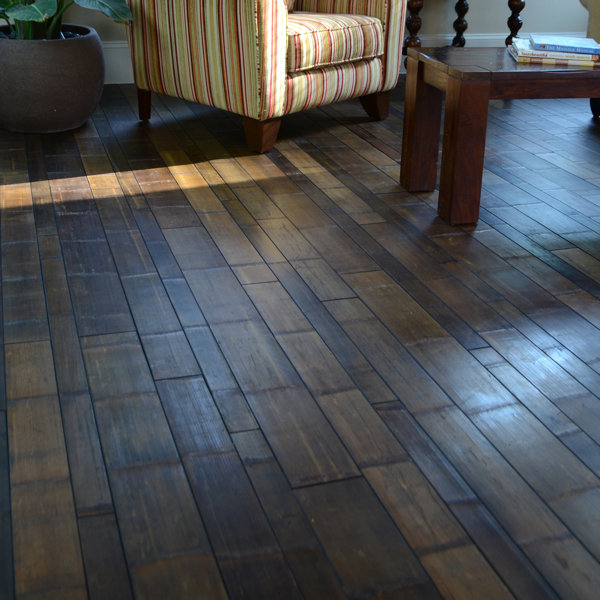Bamboo flooring has grown in popularity over the years, particularly in commercial spaces. Its aesthetic appeal, durability, and eco-friendliness make it an excellent choice for various applications. This article will provide you with a detailed overview of commercial bamboo flooring, exploring its benefits, types, installation process, maintenance, and sustainability aspects.
Understanding Bamboo Flooring
What is Bamboo Flooring?
Bamboo flooring is made from bamboo plants, primarily the Moso species, which is known for its strength and fast growth. Unlike traditional hardwood, bamboo is a type of grass, which regrows after harvesting without the need for replanting. The process involves slicing the bamboo stalks into strips, boiling them to remove sugars, and then laminating them under high pressure to create solid boards or engineered planks.
Types of Bamboo Flooring
There are three main types of bamboo flooring: horizontal, vertical, and strand-woven. Horizontal bamboo shows the natural growth rings and nodes, giving a more traditional wood-like appearance. Vertical bamboo has a consistent, linear look as the strips are placed vertically and glued together. Strand-woven bamboo is the most durable, made by compressing bamboo fibers under extreme pressure, resulting in a harder and denser product.
Advantages of Bamboo Flooring
Bamboo flooring offers numerous advantages, making it ideal for commercial spaces. It is highly durable, with strand-woven bamboo being particularly resistant to dents and scratches. Bamboo is also an eco-friendly option as it grows rapidly and can be harvested sustainably. Additionally, bamboo flooring is relatively easy to install and maintain, and it provides a unique aesthetic that can enhance the look of any commercial interior.
Drawbacks of Bamboo Flooring
Despite its many benefits, bamboo flooring has some drawbacks. It can be susceptible to moisture and humidity, which may cause it to warp or swell if not properly treated or installed. Bamboo flooring can also be prone to scratching and denting, particularly in high-traffic areas, although strand-woven bamboo is more resistant. Additionally, the color of bamboo flooring may fade over time when exposed to direct sunlight.
Cost Considerations
The cost of bamboo flooring can vary widely depending on the type and quality. While it can be more affordable than traditional hardwood, high-quality strand-woven bamboo can be more expensive. Installation costs also need to be considered, which can add significantly to the overall expense. However, the long-term durability and aesthetic appeal can make it a cost-effective investment for commercial spaces.
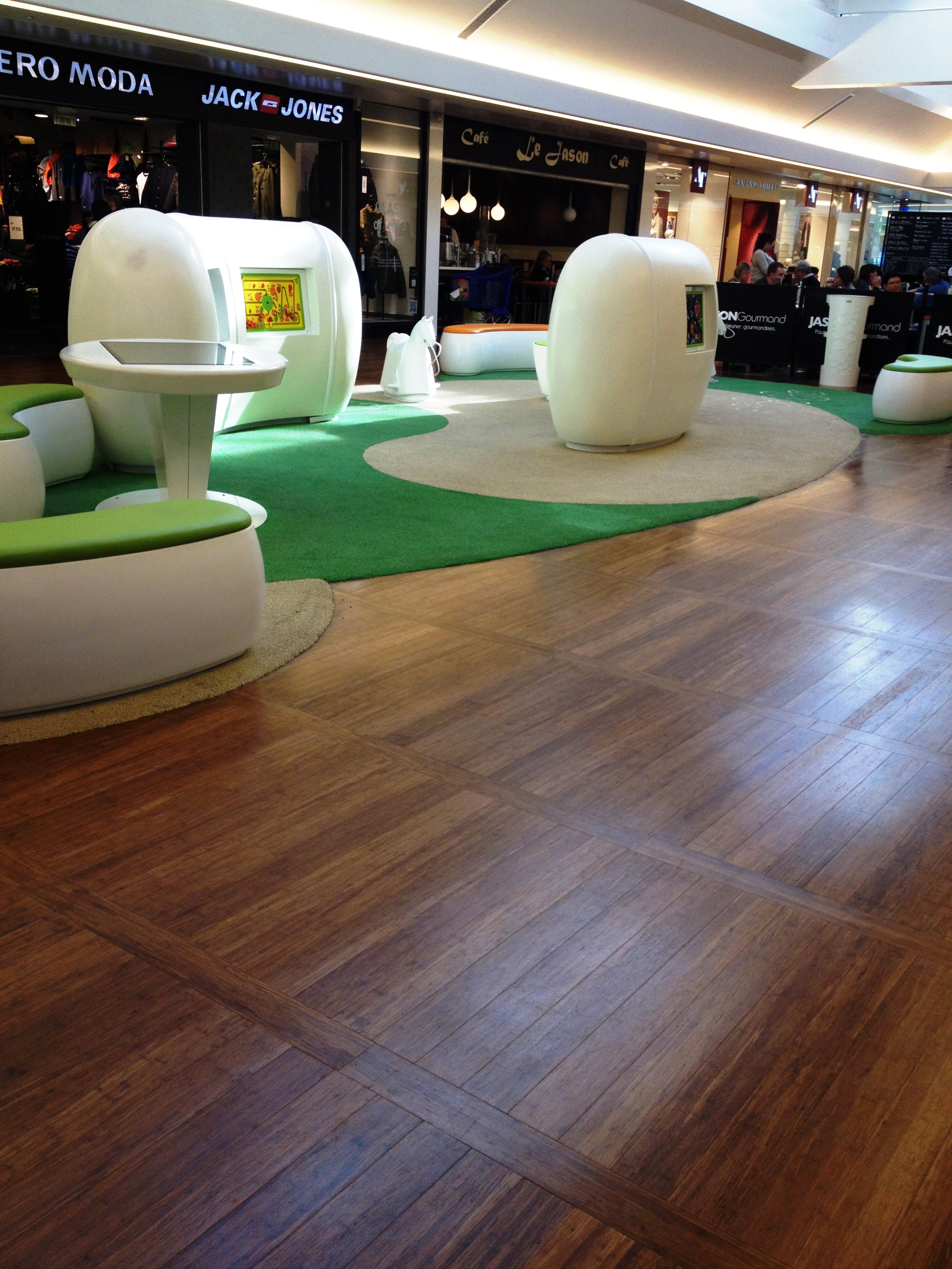
Types of Bamboo Flooring
Horizontal Bamboo Flooring
Horizontal bamboo flooring is made by gluing strips of bamboo together horizontally, creating a wide and flat surface. This type of flooring showcases the natural growth rings and nodes of the bamboo, giving it a unique and organic look. It is often chosen for its aesthetic appeal and the natural warmth it brings to a space. However, it is less durable than strand-woven bamboo and may not be suitable for high-traffic areas.
Vertical Bamboo Flooring
Vertical bamboo flooring is constructed by placing bamboo strips vertically and gluing them together. This creates a more uniform and linear appearance, which some people prefer for its modern and sleek look. Vertical bamboo is slightly harder and more durable than horizontal bamboo, making it a better choice for areas with moderate foot traffic. However, it is still less durable than strand-woven bamboo.
Strand-Woven Bamboo Flooring
Strand-woven bamboo flooring is made by compressing bamboo fibers under extreme heat and pressure, resulting in an exceptionally hard and dense material. This type of bamboo flooring is highly resistant to scratches, dents, and wear, making it ideal for commercial spaces with heavy foot traffic. Strand-woven bamboo also has a unique, textured appearance that can add a sophisticated touch to any interior.
Engineered Bamboo Flooring
Engineered bamboo flooring consists of a thin layer of bamboo on top of a plywood or fiberboard core. This type of flooring offers increased stability and resistance to moisture compared to solid bamboo. It is an excellent choice for areas with fluctuating humidity levels, such as basements or kitchens. Engineered bamboo flooring is also easier to install and can be more cost-effective than solid bamboo options.
Bamboo Parquet Flooring
Bamboo parquet flooring is created by arranging small pieces of bamboo in a geometric pattern, such as herringbone or chevron. This type of flooring provides a distinctive and elegant look, making it a popular choice for upscale commercial spaces. Bamboo parquet flooring combines the durability of bamboo with the timeless appeal of classic parquet designs, offering a unique and stylish flooring solution.
Installation Process
Preparing the Subfloor
Before installing bamboo flooring, it is essential to prepare the subfloor. The subfloor should be clean, dry, and level to ensure a successful installation. Any old flooring, debris, or adhesive residues must be removed. If necessary, the subfloor should be repaired or leveled to provide a smooth and stable base for the bamboo flooring. Moisture barriers may also be required, particularly for installations over concrete or in areas prone to humidity.
Acclimating the Bamboo
Bamboo flooring needs to acclimate to the room’s environment before installation. This process involves storing the bamboo planks in the installation area for at least 48 to 72 hours to allow them to adjust to the temperature and humidity levels. Acclimating the bamboo helps prevent expansion or contraction after installation, reducing the risk of warping or gaps.
Installation Methods
There are several methods for installing bamboo flooring, including nail-down, glue-down, and floating installations. The nail-down method involves securing the bamboo planks to the subfloor with nails or staples, providing a secure and stable installation. The glue-down method uses adhesive to bond the bamboo directly to the subfloor, offering increased stability and sound insulation. Floating installations involve connecting the planks using a tongue-and-groove system without attaching them to the subfloor, making it a quicker and easier method suitable for DIY projects.
Finishing and Sealing
After the bamboo flooring is installed, it may require finishing and sealing to protect the surface and enhance its appearance. Pre-finished bamboo flooring comes with a factory-applied finish, while unfinished bamboo needs to be sanded, stained, and sealed on-site. Applying a high-quality sealant helps protect the bamboo from moisture, scratches, and wear, ensuring a long-lasting and beautiful floor.
Post-Installation Care
Once the bamboo flooring is installed, it is essential to follow proper care and maintenance guidelines to preserve its appearance and durability. This includes regular cleaning, using protective pads on furniture, and avoiding excessive moisture exposure. Allowing the floor to acclimate to its environment and avoiding heavy traffic or placing heavy objects on the floor immediately after installation can also help prevent damage.
Maintenance and Care
Regular Cleaning
Regular cleaning is essential to maintain the appearance and longevity of bamboo flooring. Sweep or vacuum the floor regularly to remove dirt, dust, and debris that can scratch the surface. Use a damp mop with a mild, pH-neutral cleaner to clean the floor, avoiding excessive water which can cause the bamboo to swell or warp. Dry the floor thoroughly after cleaning to prevent moisture damage.
Preventative Measures
Taking preventative measures can help protect your bamboo flooring from damage. Place doormats at entrances to reduce the amount of dirt and moisture brought into the space. Use felt pads or protective glides on the legs of furniture to prevent scratches and dents. Avoid wearing high heels or heavy shoes on the floor, as they can cause damage. Keep pets’ nails trimmed to minimize scratches.
Addressing Spills and Stains
Promptly addressing spills and stains is crucial to prevent damage to bamboo flooring. Wipe up spills immediately using a soft, dry cloth to prevent moisture from seeping into the bamboo. For stubborn stains, use a damp cloth with a mild cleaner, but avoid using abrasive cleaners or scrubbing too hard, as this can damage the finish. Regularly check for and address any moisture issues to prevent long-term damage.
Refinishing and Repairs
Over time, bamboo flooring may show signs of wear and tear, such as scratches, dents, or fading. Refinishing the floor can restore its appearance and extend its lifespan. This involves sanding down the surface and applying a new finish. Minor scratches and dents can be repaired using wood filler or touch-up kits specifically designed for bamboo flooring. For more extensive damage, consider consulting a professional.
Long-Term Maintenance
Long-term maintenance of bamboo flooring includes periodic inspections and addressing any issues promptly. Regularly check for signs of wear, damage, or moisture problems, and take action as needed. Reapply sealant or finish every few years to protect the surface and maintain its appearance. Following these maintenance tips can help ensure your bamboo flooring remains beautiful and durable for many years.
Sustainability of Bamboo Flooring
Environmental Benefits
Bamboo flooring is renowned for its environmental benefits. Bamboo is a highly renewable resource that grows much faster than traditional hardwood trees, reaching maturity in just 3-5 years. Harvesting bamboo does not require replanting, as the plant regenerates from its roots. This makes bamboo a sustainable and eco-friendly flooring option that helps reduce deforestation and promotes environmental conservation.
Carbon Footprint
The carbon footprint of bamboo flooring is generally lower than that of traditional hardwood flooring. Bamboo absorbs carbon dioxide during its growth, helping to offset carbon emissions. Additionally, the manufacturing process for bamboo flooring typically uses less energy and produces fewer emissions compared to hardwood processing. Choosing bamboo flooring can contribute to a lower overall carbon footprint for your commercial space.
Certifications and Standards
When selecting bamboo flooring, look for products that are certified by reputable organizations to ensure they meet high environmental and quality standards. The Forest Stewardship Council (FSC) certification indicates that the bamboo is sourced from responsibly managed forests. Other certifications, such as the LEED (Leadership in Energy and Environmental Design) and GREENGUARD certifications, can indicate that the product meets strict environmental and indoor air quality standards.
Lifecycle and Durability
Bamboo flooring is known for its durability, particularly strand-woven bamboo, which is harder than many traditional hardwoods. This durability means that bamboo flooring has a long lifecycle, reducing the need for frequent replacements and contributing to its sustainability. Proper care and maintenance can further extend the life of bamboo flooring, making it a long-term investment in both quality and environmental responsibility.
Recyclability and Disposal
At the end of its lifecycle, bamboo flooring is more environmentally friendly to dispose of compared to synthetic flooring options. Bamboo is biodegradable and can be recycled or repurposed, reducing waste and environmental impact. When disposing of bamboo flooring, consider recycling programs or repurposing the material for other uses to minimize its environmental footprint.
Common Mistakes to Avoid
When installing and maintaining commercial bamboo flooring, it’s important to avoid common mistakes to ensure a successful and long-lasting installation:
Skipping Acclimation: Failing to acclimate the bamboo flooring to the room’s environment can result in expansion or contraction after installation, leading to gaps or warping. Always allow the flooring to acclimate for at least 48 to 72 hours.
Incorrect Installation Methods: Using the wrong installation method for your subfloor type or failing to follow manufacturer instructions can result in an unstable floor. Choose the appropriate method (nail-down, glue-down, or floating) and follow the guidelines carefully.
Ignoring Moisture Levels: Bamboo flooring is sensitive to moisture. Installing it in areas with high humidity without proper moisture barriers or ignoring subfloor moisture levels can cause swelling and warping. Always check moisture levels and use appropriate barriers.
Using Harsh Cleaners: Cleaning bamboo flooring with harsh chemicals or excessive water can damage the finish and cause warping. Use a mild, pH-neutral cleaner and a damp, not wet, mop for cleaning.
Neglecting Maintenance: Failing to perform regular maintenance, such as sweeping, mopping, and applying protective pads on furniture, can lead to scratches, dents, and a shortened lifespan. Regularly clean and maintain the floor to keep it in good condition.
Is bamboo flooring suitable for high-traffic commercial areas?
Yes, particularly strand-woven bamboo flooring, which is extremely durable and resistant to wear, making it ideal for high-traffic commercial areas. Its hardness and density help withstand heavy foot traffic and the demands of commercial environments.
How does bamboo flooring compare to hardwood in terms of cost and durability?
Bamboo flooring is often more affordable than traditional hardwood flooring while offering comparable or even superior durability, especially in the case of strand-woven bamboo. It provides a cost-effective and sustainable alternative to hardwood with a similar aesthetic appeal.
Can bamboo flooring be installed over existing flooring?
Bamboo flooring can be installed over existing flooring, provided the subfloor is clean, dry, and level. Floating installations are particularly suitable for this purpose, but it’s essential to follow the manufacturer’s guidelines for the best results.
What are the environmental benefits of choosing bamboo flooring for a commercial space?
Bamboo is a highly renewable resource that grows quickly and regenerates after harvesting. Its production has a lower carbon footprint compared to traditional hardwoods. Additionally, bamboo flooring can be recycled or biodegraded, reducing its environmental impact.
How do I maintain bamboo flooring in a commercial setting?
Regular maintenance includes sweeping or vacuuming to remove dirt and debris, using a damp mop with a mild cleaner for cleaning, and addressing spills promptly. Protective pads on furniture and regular inspections can help prevent scratches and dents, ensuring the floor remains in good condition.
CALI BAMBOO Boardwalk 14mm T x 5.37 in. W x 72in Solid Wide T and
Hot Sale Commercial Solid Indoor Bamboo Flooring
Commerical flooring from Tarkett, Amorim and more, featuring vinyl
Solid Waterproof & Fireproof Bamboo Flooring/Floor/Panel on Sale
Commercial Bamboo Flooring Wayfair
Engineered Bamboo Flooring Natural
Related Posts:
